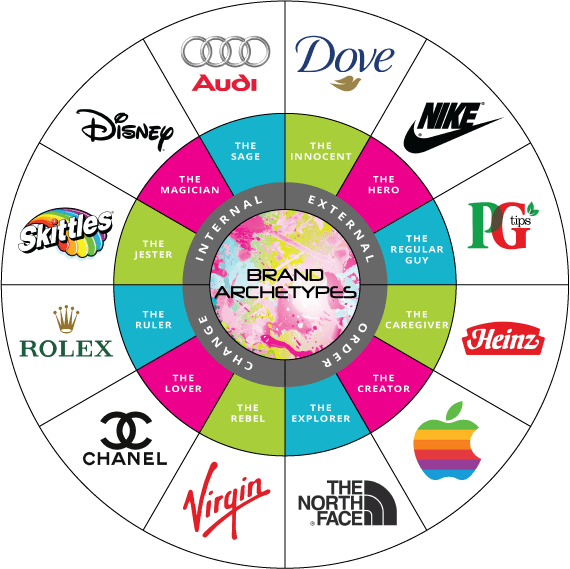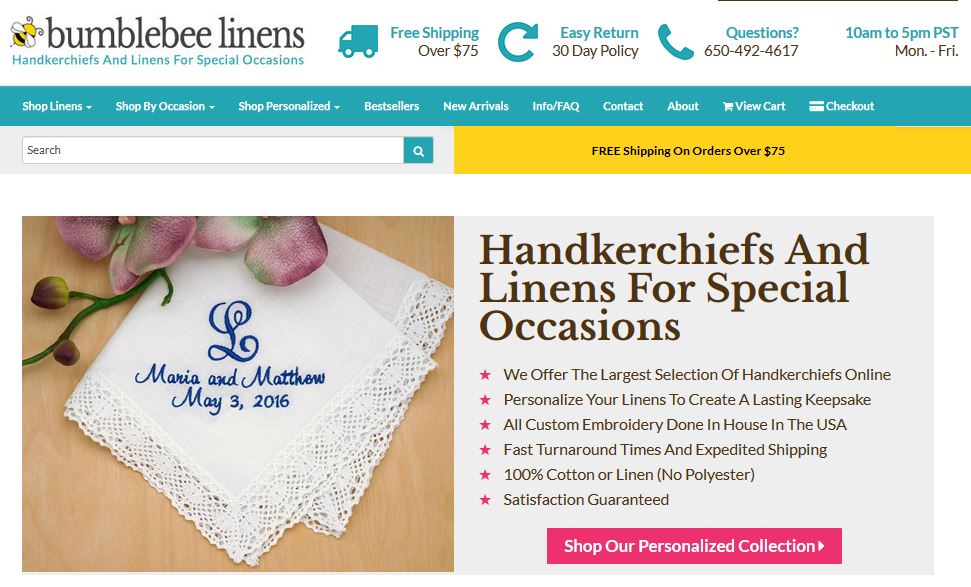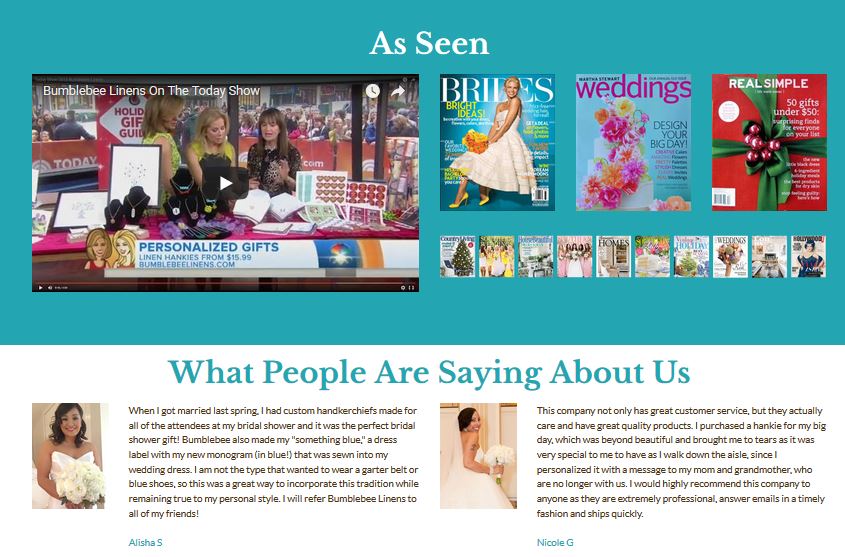
Wish to improve online conversion for your website? Need to show better marketing ROI to your boss?
In this article, I will lay down 7 important online copywriting principles that will transform your content marketing efforts.
Before we go there though, here are some sobering statistics to note:
- You have 50 milliseconds to make a good first impression on your website
- People spend an average of 5.59 seconds reading your website content
- With so many things to distract us, your readers’ attention span is shorter than a goldfish
Against this backdrop, it is critical for you to craft content that people pay attention to, read, and act upon.
And the best way for you to do so is to focus on your potential customers.
Before we do so though, here is one thing you need to know.
Its Not About Your Brand
Many organisations and individuals are guilty of excessively tooting their horns online.
They write at length about their company’s achievements, accolades, and history.
They wax lyrical about their global markets and impressive track record.
They elaborate about their state-of-the-art technology, cutting edge features, and unparalleled performance standards.
Now there isn’t anything wrong about highlighting your strengths. After all, your prospective customers will want to choose a partner with the wherewithal to deliver the goods.
However, you should ONLY do so if it helps you to serve your customers better.
In other words, make your content marketing efforts all about THEM, not you.
Let’s look at seven ways for us to do so.
#1 Make Them Your Heroes
Whenever you craft a piece of content for your website, social media post, or email, you should make your customers the protagonists.
In other words, your story should feature them as the main ‘character’ in your story, complete with the emotions, thoughts, behaviours and actions that typify how they’ll be like.
First, you need to paint a vivid profile of your customer. Who are they likely to be? What do they do? How do they feel?
Next, weave them into your content by doing the following:
- Visuals: Feature a close visual representation of your customers on your website, articles, social media posts, or emails.
- Copy: Describe a ‘day-in-the-life’ of your customers as accurately as you can. Make it believable.
- Context of use: Are there situations that your customers are likely to find themselves in? Ones where your product or service may come in handy? Narrate those.
- Social Groups: Include any social settings that your customer would be in. Would that be with her family members? Or individually at work?
Caterpillar is a good example of a company that does just that, as you can see from the screenshot of their website below.

#2 Focus On Their Problems
Now that you’ve got your customers firmly in your cross-hairs, the next thing you need to do is focus on their problems.
There are several ways to distill your customer problems:
- Customer Feedback: Peruse your customer feedback forms or surveys. What are the common complaints that keep cropping up?
- Social Media Fan Comments: What do visitors to your social media pages commonly grouch about?
- Competitor Social Media Accounts: Have a look at your competitor’s social media accounts. Are there any requests or complaints that constantly crops up?
- Search Engine Queries: Use tools like Keyword Tool or Ubersuggest to discern any long-tail keywords that commonly crop up.
- Forum Discussions: Visit an online forum related to your trade. What are some of the topics that have cropped up?
The best example of a company focused on their customer problems is Riverpools and Spas. On their website, they’ve included thousands of questions and answers that cater to all their potential customer queries.

#3 Be Their Guide
Like Yoda, Professor Dumbledore, or Mr Miyagi, your role as a brand is to be a “shifu” to your customers.
Act like a guide and a mentor – a sentient entity whose goal is to help your ‘hero’ (aka customer) to succeed in whatever they do in life.
To be a guide to your customer, you need to consider your brand persona and how it should be represented. A good way to do so is to use a brand archetype framework such as the one below by Vision One.

Once you’ve got your ‘mentoring’ voice in place, use it consistently in all your communications.
The North Face is a great example of a brand with a consistent “Explorer” persona. You can see this exemplified in all their YouTube videos, like the example below:
As well as their blog, as shown below.

#4 Display Empathy
Beyond being a guide to your customers, you should also demonstrate empathy.
Empathy is a psychological phenomena where you reach out to truly understand what the other party feels, and frame yourself in his exact situation.
Brands that have good empathy tend to do better in the marketplace than those which are solely focused on their own brands. Beyond feeling what their customers feel, they also know how to portray situations that connect with their customers.
Apple’s evergreen 1984 Macintosh Ad is a great example of empathy in action. If you are a nameless faceless corporate guy working in a dreary office, you’ll certainly resonate with the vivid imagery of a woman swinging a hammer to ‘smash’ the way things have always been done.
#5 Offer Specific Solutions
Beyond demonstrating that you know what they need, want or feel, you need to provide specific ways to reduce your customer’s pain. Or to increase their pleasure.
Now, the key here is to be as specific and targeted as possible, and to adopt a two (or three) stage process:
- Stage 1: Solve Small Problems: Provide free content that helps them to solve a smaller problem. For example, it could be a daily 5 minute workout to build their apps.
- Stage 2: Solve Moderate Problems (in return for their contacts): To get your potential customer’s contacts (so you can market to them), offer a more valuable piece of content. For example, you could ask them to drop their name, email and mobile numbers in exchange for emailing them a 30 minute workout video.
- Stage 3: Solve Large Problems (for a fee): This is of course what most brands would love to do. The fee could be the price of a new pair of sports shoes, a speaking engagement, or a software package.
It is important not to jump the gun here and immediately ask for your customer’s credit card number the first time they interact with you. That is just poor form, and will repel them faster than Baygon kills mosquitoes.
Whole Foods Market is a good example of a company that provides specific solutions (ie healthy recipes) to their fans. Despite being a grocer/ supermarket, they hardly post content on their Facebook page focused on their products. Instead, its always about helping their customers to live and eat better.

Which brings us to the next point.
#6 Build Trust and Likability
With multiple brands proffering their products and services, your customer will only consider patronising your business if you can build trust and likability with her.
There are a couple of things you can do here:
- Consistently and regularly provide useful content that she can use (like Whole Foods Market above)
- Leverage on social proof, ie with statistics on the total number of customers you’ve served, years in business, and so on
- Display media coverage and examples of endorsements
- Offer risk reducers like warranties, guarantees, free shipping and service support
- Showcase your awards, accolades and endorsements (yes here’s where it comes in).
- Use customer testimonials and quotes
Bumblebee Linens is a good example of a company that uses different forms of content to build trust. On the home page of their website, they’ve included various “sales triggers” that focus on reducing risk from their potential customers. They include a hotline, product return policy, and opening hours.

If you scroll down further, you’ll also see media mentions of the business as well as positive customer testimonials.

#7 Show Them What Success Looks Like
Last, but certainly not least, you’ll need to show your customers what they could be if they succeed.
Paint the picture of how success would look like. Show them the fruits of their labours if they were to sign up for your programme or invest in your products and services.
Accounting software provider quickbooks is a good example of a brand which knows how to show what success looks like. They’ve niftily included their happy customers on their website, showing what it could look like.

Conclusion
Focusing on your customer is one of the best ways to improve traction for your brand online. By crafting content around their needs, wants and desires, you’ll help to attract their interest, deepen engagement and improve the likelihood of them buying from you.
Once again, let me recap the 7 points which we’ve covered here:
- Make Them Your Heroes
- Focus On Their Problems
- Be Their Guide
- Display Empathy
- Offer Specific Solutions
- Build Trust and Likability
- Show Them What Success Looks Like
Are there other content ideas to wrap your content around your customer? I’d love to read your thoughts.
